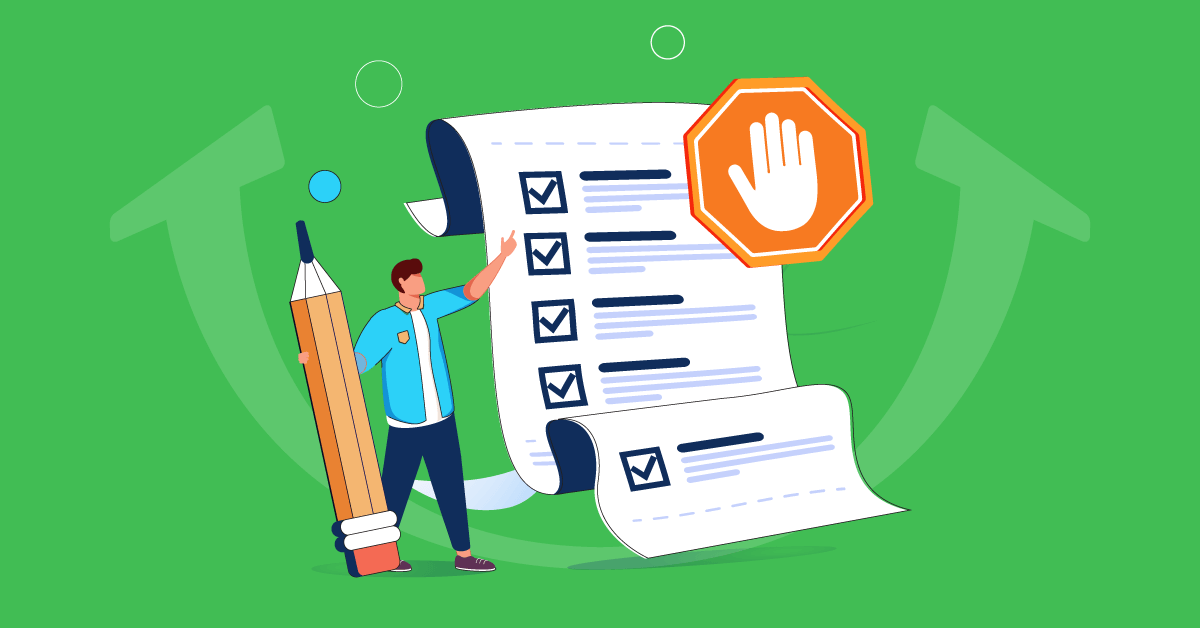Feedback is definitely one of the most neglected areas in trainer/online instructor development. While live feedback environments are easier to control, online environments are relatively challenging for providing feedback, which is important for scaffolding and developing a learner from novice to master. In this article, we will share with you some eLearning feedback tips to create a positive and achievement-oriented online training environment.
When we assess learners in an online environment, we provide feedback in many ways. Scoring, for instance, is an incomplete type of eLearning feedback. It rarely provides corrective measures for improvement. Learners often complain of lower scores, if individual feedback is missing along with scores.
On the other hand, many online instructors do not have the time to provide individual feedback; they complain of the tedious, time-consuming nature of the task. By focusing on the required feedback strategies, online instructors can be motivated to provide quality, effective feedback for an enhanced eLearning experience.
As for learners, they tend to remember instructors by the feedback they provided throughout the course. So, go ahead and use these tips to improve your eLearning feedback and student registrations in your future courses.
Research on online collaboration strategies reveals three primary attitudes in an online instructor for writing feedback:
Personal: As the eLearning course progresses, the online instructor can maintain a “personality database” of the registered learners for the course.
Instructors can also add some specific and distinguishing character traits (try to be positive!) about each learner during their online encounters with them. These encounters can be assignments, emails or discussion board messages.
One tip is to use adjectives like “hard working”, “needs help”, “tries to perform well, but needs guidance”, “over-achiever”, “helps everyone in need” and something similar to remind you of the learner. When providing feedback, refer to the personality database. Personalize the message by referring to any positive or helpful act demonstrated by the learner in the past. In that vein, encourage them to continue doing better.
Also refer to the assessment criteria or rubric that corresponds closely to the current learner performance. Then highlight a step higher, indicating your expectation from the learner in the next assignment. After all, setting up higher expectations has historically paid off in the form of improved achievement and participation.
Also, remember that positive comments or positive reinforcement are more powerful that coercive comments or negative reinforcement.
Specific: Feedback must also be targeted. Always tie your feedback to the task at hand and the trend you see in the mistakes. Talk about the level and degree of learner effort and the desired direction. Also make sure to comment on whether they are on the right track or need to catch up. Then suggest strategies to catch up, if needed. And always try to tie performance in an assignment to real-world context.
Timely: Feedback needs to be consistent, immediate, ongoing, incremental, and formative. Learners have more faith in instructors who provide feedback within 24 hours or within the promised time-frame.
Also, timely feedback leads to timely corrections – leading to improvement in the upcoming assessments/assignments.
Suggested formats for creating an effective eLearning feedback:
Always begin positively: Praise the learner for submitting their work. Include a comment on their learning style that leads to a positive learning environment for them and others.
A positive start in your feedback message grabs the learner’s attention and enables them to act upon the upcoming suggestions for improvement. Moreover, learners feel a sense of belonging to the eLearning program. They are motivated to contribute further. Learning with you becomes personal. You can now prepare them to tackle the next challenge.
Connect the content assessment with real life: Have students maintain a “private journal” on a weekly basis in which they share how they applied their learning in their personal or professional lives.
This activity is actually supported by many learning management systems: simply have the learners share their journals with only one viewer: the instructor. By reading about their course to life connections, you can build more connections within the feedback. Learning with you becomes meaningful. Learners feel connected to the instructor.
Rubrics, rubrics, rubrics! Have the learners create a general performance rubric. Use their suggestions to create your own rubric.
The more detail you have in your rubric, the higher quality, efficient feedback they will receive on their grading. Rubrics offer quicker solutions than feedback. Simply add personal messages after referring to the learner status in the rubric.
Multimedia-based eLearning feedback: Did you know that a study revealed that a hefty 70% of online students preferred audio messages as eLearning feedback! And they are easier to create than text-based feedback!
Think about it: you don’t need to emulate expression and emotion through font sizes and italics or even emoticons. Simple use your natural conversation style to record your feedback. Instructor voice messages sound like personal conversations that aid in fostering a stronger learning community.
Text-based feedback with images and badges also offers great feedback options. Images that include a funny message but a hidden suggestion to work harder or read more or even talk more are great ways to guide a learner without patronizing them.
Feedback is the soul of an eLearning environment. It adds a personal layer of warmth to the seemingly “cold content”!
Strive to produce personalized feedback that is specific as well as timely. Remember, your aim is to convince the learner to act upon your words. So, start positively and end with well-meant advice.
And don’t forget to share with us your feedback and experiences from the online environment.
References
Collier, Katherine & Yoder Brown, Maureen. Successful Online Discussion and Collaboration.
| Tags: eLearning Courses,eLearning Tips



